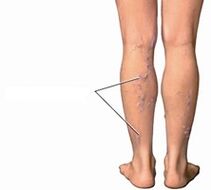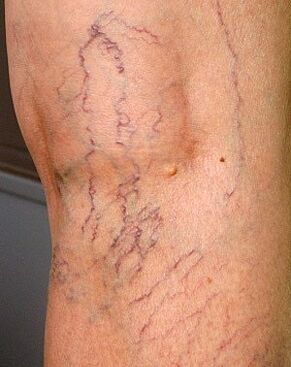Varicose veins on the legs are a fairly common chronic disease, which is an irreversible expansion of the veins of the lower extremities. As a result of pathology, the walls of the vessels become thinner and form "nodes". The lumen expands, the outflow of blood is disturbed.

The first mention of varicose veins appeared more than three hundred years ago. Today, every third woman and every tenth man suffers from the disease.
The reasons for this trend are simply explained - the more a modern person spends time in a sitting position, the higher the risk of the disease.
That is why the bottom lines of statistics on the spread of varicose veins are given to African countries.
Causes of occurrence
The main reasons that cause varicose veins are:
- Heredity - people whose relatives have had varicose veins are at risk;
- The gender component - hormonal imbalance and pregnancy is a consequence of the fact that women develop varicose veins much more often;
- Sedentary lifestyle;
- Constant loads in a standing position, a long time spent on your feet, increases the risk of developing the disease;
- Increased intra-abdominal pressure - with coughing, chronic constipation, heavy lifting;
- Overweight;
- Age-related changes;
- Inconvenient shoes.
It is noticed that women after forty-five years old are at risk for varicose veins. But adolescents are also found among patients, in whom the disease develops as a result of arteriovenous fistulas.
In men, venous expansion occurs most often due to the nature of their activity, as a result of which there is a large load on the legs. The disease is also widespread among athletes, which indicates that excessive loads can also provoke it.
How does the disease progress
- The first symptoms of varicose veins are edema, a feeling of heaviness and distention in the calves. It is characteristic that when walking or after sleeping, these signs disappear.
- At the next stage, pains, night cramps and a feeling of heat in the muscles appear. Intradermal veins show through, subcutaneous veins expand, and a large number of blue-red vascular "asterisks" appear.
- Varicose veins are dangerous because they can develop into thrombophlebitis, trophic ulcer or eczema.
Symptoms
- At the first stage, the symptoms of the disease are so subtle that the patient may not even guess that he has varicose veins. Over time, the veins begin to swell, protrude, but the person continues to feel no pain. The manifestation of veins is usually gradual, but can be triggered by exercise and hard work. High temperatures make the situation worse.
- In later stages, the symptoms become more obvious - the disease is manifested by thickening of the veins under the skin, the appearance of areas with nodular extensions on the legs. The legs become swollen while sitting, standing or walking. Puffiness subsides only in the supine position.
- Another striking sign of varicose veins are age spots on the inner surface of the legs. On areas of the skin that are thickened and acquire a painful shine, hair falls out.
If the pain in the leg increases or the temperature rises, you should urgently call a doctor, as there is a possibility of inflammation of the blood clot. Such an attack is dangerous and is often accompanied by a lack of air and weakness.
Diagnostics and treatment
For the correct treatment of varicose veins, you should contact a phlebologist who will diagnose. The prognosis largely depends on the stage at which the disease was detected - the earlier, the lower the risk of complications.
A visit to the doctor begins with an initial examination, after which he directs the patient for Doppler ultrasound. If necessary, the diagnostics are supplemented with radionuclide and X-ray contrast studies. Based on the results, the need for surgery is determined.

Treatment of varicose veins on the legs is carried out by three methods:
- Medication.
- With the help of a surgical operation. Removal of the affected veins is absolutely safe for the body - the function of superficial veins is compensated by deeper vessels.
- The use of sclerotherapy is the introduction of certain drugs that glue the walls and close the lumens. In addition, physiotherapy exercises and special underwear are actively used.
Disease prevention
- Avoid a long motionless position, especially when standing - fluid accumulates in the area of the feet, pain increases;
- Move regularly and change your body position. When walking, the calf muscles contract, and blood drains from the heart more quickly, thereby reducing the pressure in the veins. Fluid, as a result of physical activity, is absorbed by soft tissues, reducing pain;
- Do not sleep in a sitting position;
- Bend and unbend your legs if you have to sit for a long time. Get up and knead them periodically;
- The high temperature promotes the expansion of the veins (do not sit close to the fire and do not stand for a long time in the heat);
- Take a bath before going to bed, if you do it in the morning, pain may occur;
- If you do not have heart disease, but you have varicose veins, you can sleep with your feet raised, which promotes gravitational drainage of the lower extremities.
- During the day, you can also raise your legs three times for a period of up to 10 minutes. This method is especially useful for pregnant women;
- Avoid salty foods.
Varicose veins are an unpleasant and chronic disease. But timely prevention and treatment will help avoid the development of the disease and reduce the risk of complications. If the disease is started, thrombophlebitis or eczema may develop.






























